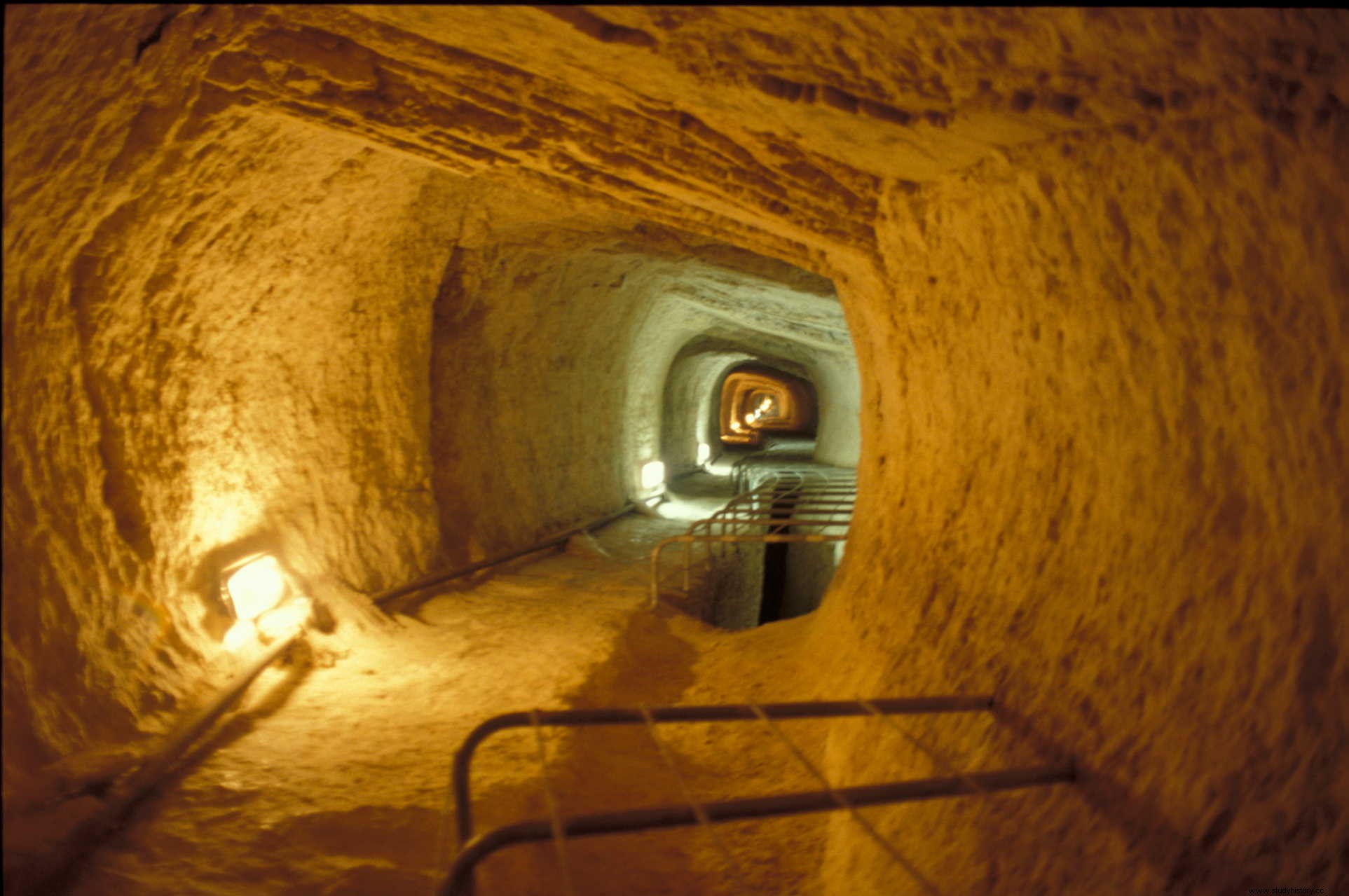Although all the constructions of Antiquity that are still standing today, regardless of their size, would deserve the prefix of mega Just for the fact that they are still standing, today I will talk about two of them, one civil and the other military, not very well known and that deserve the description of mega-constructions:the Eupalino tunnel and the artificial isthmus of Tyre.
Eupalino Tunnel
Although the great artists when it came to channeling and transporting water were the Romans, the Greeks also showed that, when they were put on, they made a virtue of necessity. Proof of this, and which can be visited today, is the Eupalino or Samos tunnel built in the 6th century BC

Given the lack of rain and the difficulties in the water supply in Samos, the tyrant Polícrates He studied the different proposals of his countrymen to remedy that serious problem. He didn't take long, because he didn't have any on the table. So, he had to be a foreigner, Eupalinus of Megara , who offered a solution:bring the water from the springs on the other end of the island through an aqueduct over 2000 meters long, crossing Mount Krasto with a tunnel of more than 1000 meters, a work of engineering worthy of being among the wonders of the Ancient World. A project as complex as it is ingenious that, being the only option, became the best. Eupalino's project consisted of drilling the base of the more than 300-meter-high mountain from two opposite sides to join in the center after excavating the tunnel of more than 1,000 meters. It really wasn't just one tunnel, but two:the upper and horizontal one dug directly into the rock, almost 2 meters high by 2 meters wide, through which the slaves moved easily and from where they worked; and a lower one, built from the first, with a small slope through which the water would be channeled. If the engineering work was already very complex, what to say about the difficulty involved in making the workers who were drilling in opposite directions coincide at one point... well, it was almost millimeter, since they did it with a deviation of just 60 centimeters. With the work completed, after 10 years of work, Polycrates had a city supplied with water even in the event of a supposed siege and, in addition, the upper tunnel could serve as an escape route.
This work has even more merit if we compare the tunnel boring machines that today redesign the orography of our planet with the iron tools, sweat and blood used by the slaves of Samos. In order to split the rocks they came across, Eupalino used battering rams like those used to break down doors and walls. They also used the methods that centuries later would help the great Hannibal to cross the Alps:heating the rocks with fires and suddenly extinguishing them with water to crack them or pouring hot vinegar to weaken them -effective if they are limestone-.
Artificial Isthmus of Tyre.
One of the greatest conquerors and strategists in history was Alexander the Great , but to take Tyre, he had to use a lot of imagination. The city of Tyre, located in present-day Lebanon, was one of the largest Phoenician city-states -some 40,000 inhabitants-, with the peculiarity that it had a fortified island in front of it with walls over 40 meters high and two natural harbours.
In 332 BC, Alexander took the part of the city located on the mainland, but he could not do the same with the insular part as he did not have a sufficient fleet to attack it. Given the impossibility of doing it by sea, he decided to do it by land... but it was an island . He ordered the construction of a stone and earth jetty to join the mainland with the island to cover the 700 meters that separated them. When the engineering work began, from the mainland it was much easier because of the shallow depth and the distance from the enemy walls, but when the jetty began to take shape, the depth increased sharply and, furthermore, the enemies were already within reach. the Macedonians. To protect the workers, two towers were built in the most advanced part of the breakwater from which the Tyrians were constantly harassed. These, who had a solution for each idea of Alejandro, loaded an old ship with all kinds of flammable materials and launched it as a fire ship against the towers to later, with arrows, set fire to the ship and the towers. Faced with that loss and when they had no more solutions, a fleet of more than 200 ships showed up to besiege Tyre. Now Alexander's fleet could protect the construction of the breakwater, even so the ingenuity of the Tyrians was delaying the work.

Six months later, the breakwater was finished and the siege weapons, located on the artificial isthmus, managed to get closer to attack the walls. At the same time, and after having blocked the Tyrian fleet, they also attacked from the sea. When the walls collapsed, the city quickly fell. Although Alexander admired the Tyrians' bravery and ingenuity, he was to punish them as a warning to other cities. Compared to the 8,000 Tyrians killed and the 30,000 sold into slavery, Alexander only lost 400 men.
